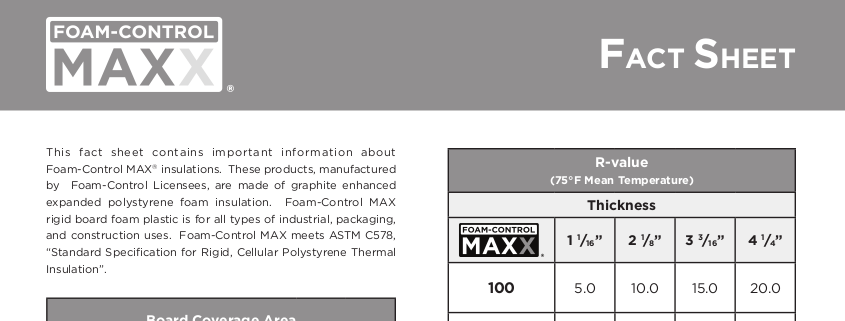A Comprehensive Overview to Executing Foam Control Solutions in Your Workflow
Reliable foam control is a vital element of functional effectiveness that usually goes neglected. Understanding the details of foam generation can considerably influence both productivity and item top quality. By checking out crucial factors such as application compatibility and workers training, companies can optimize their foam monitoring initiatives.
Comprehending Foam Difficulties
Foam obstacles are a significant problem throughout numerous industries, impacting functional efficiency and item high quality. The development of too much foam can hinder procedures such as blending, transportation, and storage, leading to increased downtime and waste. In fields like food and beverage, pharmaceuticals, and petrochemicals, foam can disrupt production lines, creating item variances and contamination dangers.
Furthermore, foam can obstruct equipment performance, leading to costly repair work and upkeep. In wastewater therapy, foam can interrupt clarifier operations, resulting in reduced treatment effectiveness and regulatory compliance concerns.
Recognizing the underlying reasons for foam generation is crucial for efficient administration. Aspects such as surfactants, temperature variations, and agitation degrees can all add to foam manufacturing. Identifying these aspects permits industries to apply targeted strategies that decrease foam formation while keeping item stability.
Kinds Of Foam Control Solutions

Mechanical services include the use of tools such as foam skimmers or defoamers. Chemical options, on the various other hand, consist of the application of defoaming representatives-- materials that interrupt the foam structure, leading to its collapse. Foam Control.
Last but not least, functional techniques concentrate on procedure modifications. This may include customizing tools specifications, such as temperature level and pressure, or altering the circulation rates of fluids to lessen foam generation. Furthermore, executing great housekeeping methods can likewise minimize foam development by decreasing contaminants that add to foam stability.
Selecting the appropriate foam control option entails evaluating the details needs of the operation, including the kind of procedure, the attributes of the products entailed, and safety and security factors to consider.
Picking the Right Products
Picking the ideal foam control products calls for a thorough understanding of the specific application and its special obstacles. Variables such as the kind of foam, the setting in which it occurs, and the preferred result all play critical roles in item selection. Foam Control. In industries like food processing, it is crucial to select food-grade defoamers that conform with safety policies while efficiently handling foam.
Furthermore, take into consideration the viscosity of the fluid where the foam issue exists. Some items are formulated for low-viscosity applications, while others are customized for thicker fluids. Compatibility with existing procedures is one more crucial element; the chosen foam control agents ought to integrate seamlessly without interfering with total procedures.
Another crucial aspect is the technique of application. Some products see this might call for dilution, while others can be applied straight. Examining the ease of usage and the called for dosage can provide understandings into the item's effectiveness and cost-effectiveness.
Implementation Approaches
Successful implementation approaches for foam control services call for a methodical technique that lines up item option with operational requirements. The initial step includes a complete analysis of the processes where foam happens, determining specific areas that necessitate treatment. By engaging linked here cross-functional groups, including quality, production, and design assurance, organizations can gather understandings that notify the choice of one of the most reliable foam control products.
Following, it is critical to establish clear goals for foam reduction, ensuring that these objectives are quantifiable and attainable. This may entail specifying acceptable foam levels and the timelines for implementation. Training personnel on the residential or commercial properties and application methods of picked foam control representatives is similarly crucial, as appropriate use is important for optimal results.
In addition, integrating foam control solutions right into existing operations calls for careful planning. Ultimately, a well-structured approach will certainly enhance functional effectiveness while properly managing foam-related difficulties.
Surveillance and Reviewing Efficiency
Monitoring and evaluating the efficiency of foam control services is essential for making certain that implemented approaches yield the preferred outcomes. This process includes methodical information collection and analysis to assess the performance of foam control agents and techniques. Key performance indications (KPIs) need to be established before execution, enabling for a clear baseline against which to determine development.

Assessing effectiveness likewise needs routine testimonials of foam control treatments and agent effectiveness. This can be completed with sampling and screening, enabling drivers to figure out if present options are satisfying operational requirements. Furthermore, it is important to solicit comments from group members who interact with these systems daily, as their insights can expose operational nuances that quantitative data might neglect.

Ultimately, an organized surveillance and examination structure aids determine needed look at more info modifications, making sure that foam control remedies stay effective, cost-efficient, and straightened with organizational goals.
Conclusion
To conclude, efficient foam control services are necessary for maximizing functional efficiency and maintaining product high quality. A comprehensive understanding of foam challenges, integrated with the choice of suitable items and application techniques, promotes the effective management of foam generation. Spending and establishing measurable kpis in personnel training further enhance the effectiveness of foam control steps. Routine surveillance and evaluation guarantee continuous renovation, eventually resulting in a much more effective and streamlined operational environment.
Executing good housekeeping techniques can additionally reduce foam development by decreasing impurities that add to foam security.
Choosing the ideal foam control items calls for a detailed understanding of the details application and its special difficulties (Foam Control).Effective application methods for foam control remedies call for an organized approach that lines up product selection with operational demands.In verdict, efficient foam control services are essential for optimizing operational effectiveness and preserving item high quality. A thorough understanding of foam difficulties, combined with the choice of appropriate items and application approaches, facilitates the successful management of foam generation